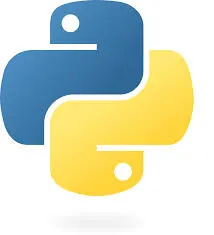Mastering numpy append in Python: A Complete Guide

Python has become one of the most popular programming languages for data analysis, machine learning, and scientific computing. Its versatility is largely due to powerful libraries like NumPy, which allows for efficient numerical operations. One of the most useful functions in NumPy is numpy append, which helps developers add elements to arrays dynamically. In this guide, we’ll cover everything about numpy append, from syntax and examples to best practices and real-world applications.
What is numpy append?
In Python, arrays store collections of elements. NumPy arrays are optimized for performance and support vectorized operations, which means you can perform calculations across entire arrays without loops.
Unlike Python lists, NumPy arrays have fixed sizes, so adding elements directly is not possible. numpy append solves this by creating a new array that combines the original array and the elements you want to add.
Syntax:
numpy.append(arr, values, axis=None)
-
arr: The original array.
-
values: Element(s) to append.
-
axis: Axis along which to append. If None, arrays are flattened before appending.
Why Use numpy append?
Using numpy append offers several benefits:
-
Dynamic Array Expansion: Grow arrays without manually creating new ones.
-
User-Friendly: Simple syntax suitable for both beginners and advanced programmers.
-
Multi-Dimensional Support: Append rows or columns in 2D arrays using the
axisparameter. -
Integration with NumPy Operations: Newly created arrays can be used immediately in calculations or matrix operations.
Using numpy append in Python
Appending to 1D Arrays
import numpy as np
arr = np.array([1, 2, 3])
new_arr = np.append(arr, [4, 5, 6])
print(new_arr)
Output:
[1 2 3 4 5 6]
Here, [4, 5, 6] is added to [1, 2, 3]. The original array remains unchanged unless reassigned.
Appending to 2D Arrays
arr2d = np.array([[1, 2], [3, 4]])
new_row = np.array([[5, 6]])
new_arr2d = np.append(arr2d, new_row, axis=0)
print(new_arr2d)
Output:
[[1 2]
[3 4]
[5 6]]
Setting axis=0 appends a row. Use axis=1 to append a column.
Appending Multiple Values
arr = np.array([10, 20, 30])
values = [40, 50, 60]
result = np.append(arr, values)
print(result)
Output:
[10 20 30 40 50 60]
This is useful for combining datasets or iteratively collecting results.
Best Practices for numpy append
-
Avoid Frequent Appends in Loops: Each append creates a new array, which can slow performance. Use Python lists first, then convert to NumPy arrays.
-
Specify Axis for 2D Arrays: This prevents unintentional flattening.
-
Combine with Other Functions: Functions like
numpy.vstack,numpy.hstack, ornumpy.concatenatecan provide better control and efficiency.
Real-World Applications
Data Analysis
Appending new observations dynamically is common when preprocessing data. numpy append allows merging multiple datasets seamlessly.
Machine Learning
When expanding training datasets with new samples, numpy append helps manage feature arrays and labels efficiently.
Scientific Computing
Simulations often generate iterative results. Using numpy append, you can store and organize these results in arrays for analysis.
Example: Dynamic Array Expansion
import numpy as np
data = np.array([1, 2, 3])
for i in range(4, 8):
data = np.append(data, i)
print("Final Array:", data)
Output:
Final Array: [1 2 3 4 5 6 7]
This approach is useful when reading incremental data from files, sensors, or experiments.
FAQs About numpy append
Q1: Is numpy append in-place?
No, it returns a new array. Assign it to a variable to retain the changes.
Q2: Can numpy append handle arrays of different shapes?
Yes, if axis=None. For multi-dimensional arrays, shapes must match along the specified axis.
Q3: Is it efficient for large datasets?
Repeated use in loops is inefficient. Use Python lists first, then convert to arrays.
Q4: How do I append rows or columns in 2D arrays?
Use axis=0 to append rows and axis=1 to append columns.
Q5: Are there alternatives to numpy append?
Yes, use numpy.concatenate, numpy.vstack, or numpy.hstack for better control and performance.
Conclusion
The numpy append function is essential for Python developers working with arrays. It allows dynamic growth, efficient data merging, and seamless integration with NumPy operations. By mastering its syntax, understanding best practices, and applying it in real-world scenarios, you can write clean, efficient, and maintainable Python code.
- Art
- Causes
- Crafts
- Dance
- Drinks
- Film
- Fitness
- Food
- Oyunlar
- Gardening
- Health
- Home
- Literature
- Music
- Networking
- Other
- Party
- Religion
- Shopping
- Sports
- Theater
- Wellness


